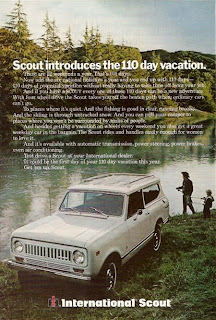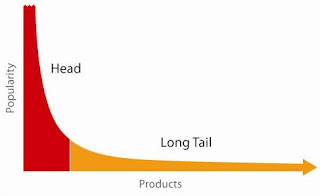What signs do you see?
What discourses (or themes) are evident?
What’s the story being told?
How does that relate to a particular ideology or hegemony?
So let’s really quickly look at an ad:

Now let’s look at another ad.
What happened here?
Chevy Tahoe hired some advertising company that had heard about ‘mash ups’ and put the material required to make an ad for them online, tried to go all Web 2.0 and get some ‘user generated content’. They put the footage online, the music and let people rearrange them and ad their own captions and sound tracks. They got a whole pile of these, most of which are now on YouTube.
This is emblematic of a shift in how people think about advertising, but also in how we think about media.
In The Sociology of Culture, Raymond Williams writes:
"…whatever purposes cultural practice may serve, its means of production are unarguably material. Indeed, instead of starting from the misleading contrast between ‘material’ and ‘cultural’, we have to define two areas for analysis: first, the relations between those material means and the social forms within which they are used… and, second, the relations between these material means and social forms and the specific (artistic) forms which are a manifest cultural production."
What does that mean? It means media is about signs and communication, but its also about how those signs reach the reader. What Chevy fails to recognise is that its not the 1950s, and media isn’t one-way anymore.
Let’s think about another example. On top of thinking about the signs and discourses, think about how those signs and discourses move from the producer (the publisher, writer, editor, etc) to the consumer (the reader).

The Gutenberg Bible
What made this revolutionary?
Let’s consider two other examples, both taken from Chris Anderson’s book ‘The Long Tail’.
http://www.youtube.com/watch?v=BtHadAigayc
Anderson cites these guys as having produced the fastest selling album of all time, with 2.4million copies in the first week, released in Jan 2000. They were put together by a music mogal called Lou Pearlman at Sony, but for their second album, No Strings Attached, they shifted to a subsidiary called Jive to get more street cred.
Anderson says these guys benefited from a particular media structure that controlled how media products reached an audience. He explains this at length in the Long Tail, but consider it in brief. Here's a picture of the Long Tail"

When this piece of music came out, it relied on retail outlets, radio and MTV to attract an audience. With limited space, and the necessity of a huge market to cover the cost of accessing that space, only the 'hits' were commercially viable. Guys like Pearlman knew how to work that structure and make hits.
According to Anderson, their success will never be matched because it’s no longer possible for record companies to control their audience in the same way. Anderson talks about the shift towards the ‘long tail’, whereby people buy more niche markets. He uses the example of The Lonely Island.
He says these guys are an example of people becoming successful not because they had a record company that knew how to run a good publicity campaign, but because they slowly built a grassroots reputation through things like YouTube. There’s some other famous examples of recent years.
MC Spandex, who got almost a million hits and world wide fame for a low budget parody music video clip:
Another ‘famous’ example is Tim and Eric. Only watch this if you’re feeling brave. These guys have a well established cult following, but as you can tell from the below clip they’d never fit into the old media structure:
What changes have happened to allow us to go from the boy bands of the late 90s and early 2000s, selling millions of copies, to things like The Lonely Island becoming popular?
Further Reading
The point is that mediums are as important as the meanings they produce. Some useful theory for looking at mediums:
Raymond Williams, The Sociology of Culture.
Hillel Schwartz, The Culture of the Copy.
Marshall McLuhan, The Essential McLuhan.
Andy Greenwald, Nothing Feels Good: Punk Rock, Teenagers and Emo.
Tara Brabazon, From Revolution to Revelation.
Steven Roger Fischer, A History of Reading.
Asa Briggs and Peter Burke, A Social History of the Media.
No comments:
Post a Comment